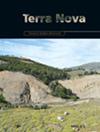Geophysical‐petrological modelling of the crust and upper mantle structure across the North‐South Gravity Lineament in NE China: Insights into the lithospheric thinning mechanism
IF 1.7
3区 地球科学
Q2 GEOSCIENCES, MULTIDISCIPLINARY
引用次数: 0
Abstract
Abstract The North‐South Gravity Lineament (NSGL), characterized by an abrupt variation in both the Bouguer gravity anomaly and topography, acts as a significant geological boundary in eastern China. The formation of such a lateral feature is believed to be associated with lithospheric thinning. The Songliao Basin (SLB) is considered to mark the centre of the lithospheric thinning in Northeast China, whereas its thinning mechanism remains unclear. Here we perform integrated geophysical‐petrological modelling of the crust and upper mantle structure along a passive‐source seismic profile crossing the NSGL, to understand the thinning mechanism beneath the SLB based on the constructed lithospheric extension and delamination models. Our delamination model identifies the compositional variation across the NSGL and the S‐wave velocity signature dominated by high velocity beneath the SLB, which are compatible with previous geochemical and geophysical results. The multidisciplinary analyses suggest that the lithospheric delamination is a plausible mechanism to account for the thinning to the east of the NSGL. The resulting model also shows that the NSGL is a lithospheric‐scale geophysical and geochemical boundary separating two distinct structural domains. In combination with previous evidence, structural discrepancies across the NSGL can be attributed to the lithospheric delamination driven by the subduction of the Palaeo‐Pacific plate.中国东北南北重力线地壳和上地幔结构的地球物理岩石学模拟:对岩石圈减薄机制的洞察
南北重力线(NSGL)以布格重力异常和地形突变为特征,是中国东部重要的地质界线。这种横向特征的形成被认为与岩石圈变薄有关。松辽盆地被认为是东北地区岩石圈减薄的中心,但其减薄机制尚不清楚。本文基于所构建的岩石圈伸展和分层模型,沿被动源地震剖面对地壳和上地幔结构进行了综合地球物理-岩石学模拟,以了解SLB下的减薄机制。我们的分层模型识别了NSGL上的成分变化和SLB下以高速为主的S波速度特征,这与之前的地球化学和地球物理结果相一致。多学科分析表明,岩石圈分层是NSGL以东变薄的一个合理机制。该模型还表明,NSGL是一个岩石圈尺度的地球物理和地球化学边界,分隔了两个不同的构造域。结合以往的证据,整个NSGL的结构差异可归因于古太平洋板块俯冲导致的岩石圈剥离。
本文章由计算机程序翻译,如有差异,请以英文原文为准。
求助全文
约1分钟内获得全文
求助全文
来源期刊

Terra Nova
地学-地球科学综合
CiteScore
4.80
自引率
8.30%
发文量
59
审稿时长
2.3 months
期刊介绍:
Terra Nova publishes short, innovative and provocative papers of interest to a wide readership and covering the broadest spectrum of the Solid Earth and Planetary Sciences. Terra Nova encompasses geology, geophysics and geochemistry, and extends to the fluid envelopes (atmosphere, ocean, environment) whenever coupling with the Solid Earth is involved.
 求助内容:
求助内容: 应助结果提醒方式:
应助结果提醒方式:


